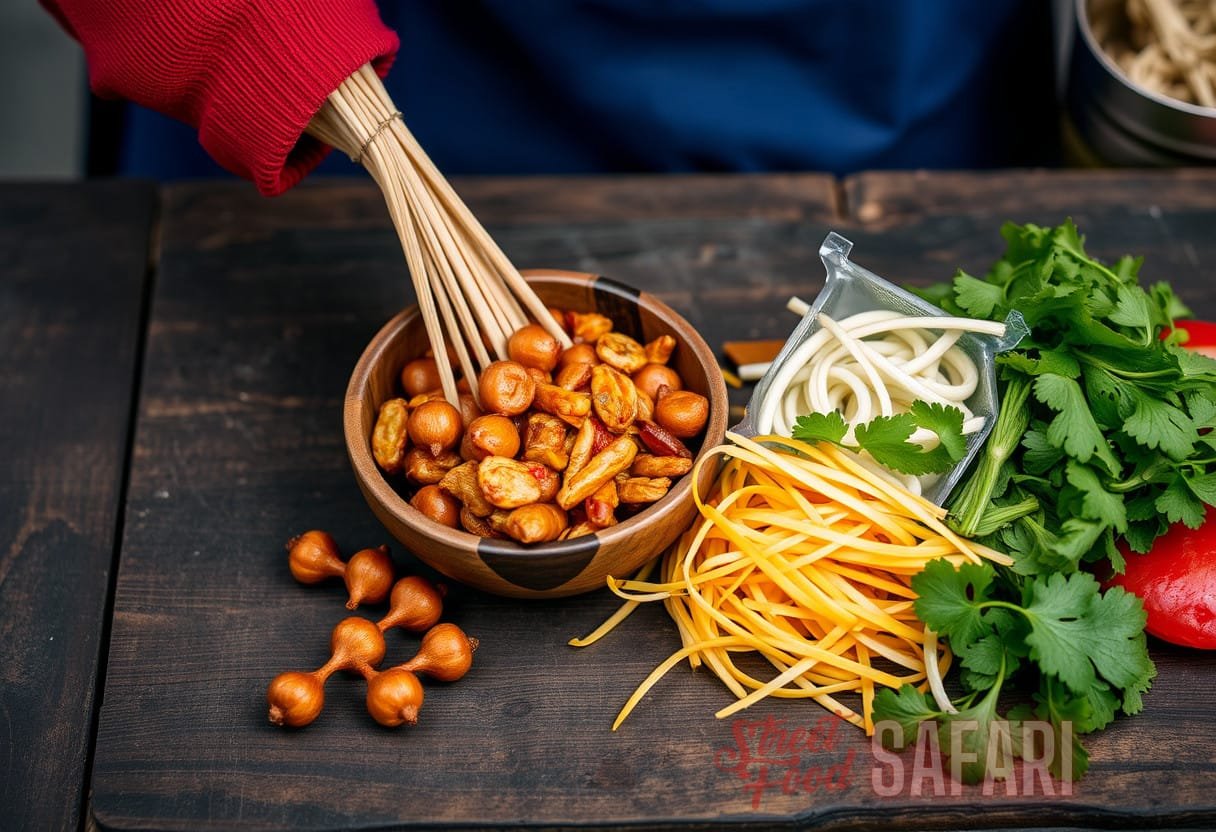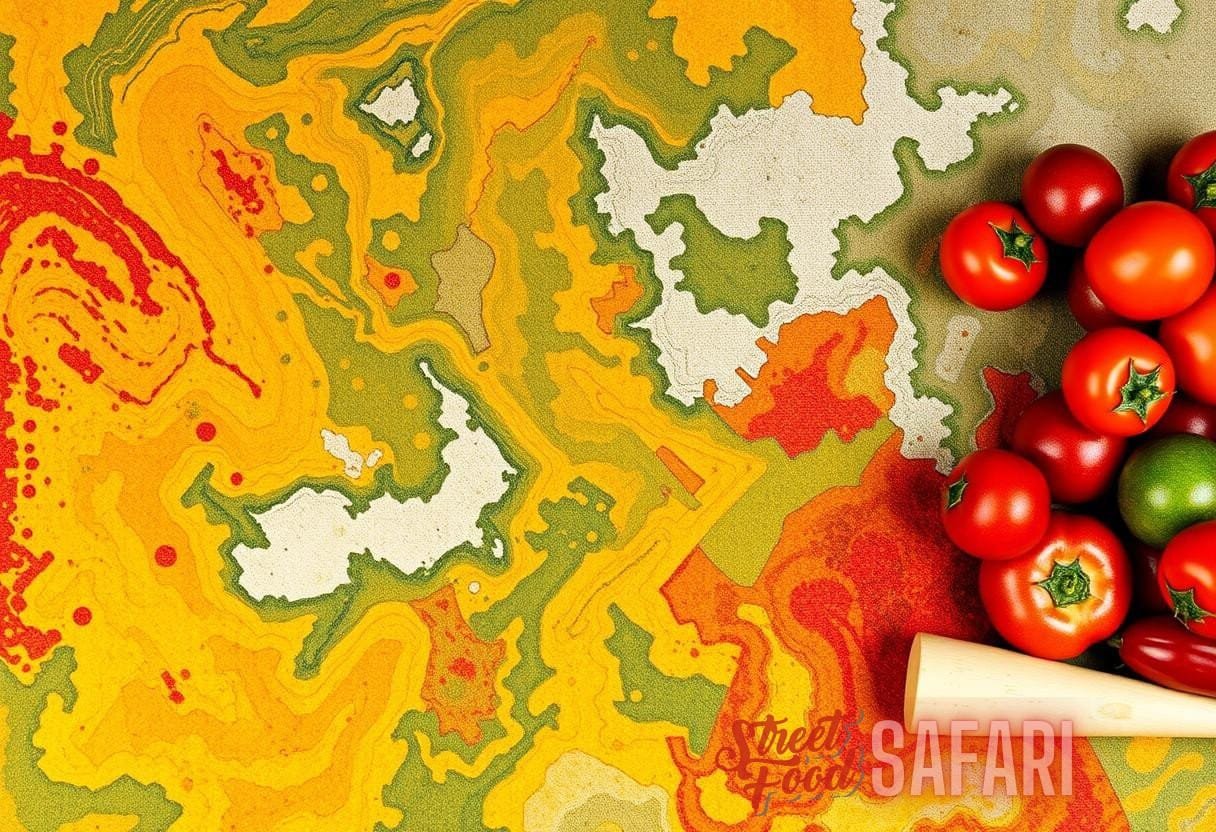Tracing Culinary Heritage: The Scientific Interplay of Tradition and Innovation in Global Food Markets
Culinary heritage reflects the multitude of flavors, cooking techniques, and traditional recipes that have evolved over generations in different cultures worldwide. Understanding the factors that influence these heritage systems is essential for grasping current culinary heritage trends.
The Concept of Culinary Heritage
Culinary heritage encompasses various aspects of food culture, including local ingredients, cooking methods, regional specialties, and communal eating practices. It serves as a living narrative that not only connects individuals to their ancestors but also informs their daily food choices. The recent resurgence in interest toward preserving culinary heritage can be attributed to:
- Cultural Identity: Many communities are seeking to reclaim their culinary roots, fostering a sense of identity in increasingly globalized societies.
- Sustainability: There is a growing awareness of the ecological and social impacts of modern food systems, prompting a return to traditional practices.
- Health Consciousness: With rising rates of lifestyle-related diseases, consumers are re-evaluating their diets to include more traditional, nutrient-dense foods.
As these trends evolve, culinary heritage is positioned at a crucial intersection where tradition meets innovation.
The Role of Science in Culinary Heritage
Scientific research plays a vital role in understanding the dynamics of food heritage. It enables the identification and preservation of ancestral food practices through advanced analytical techniques. Notable areas where science intersects with culinary heritage include:
- Genetics: Genomic studies reveal the origins of crops, allowing conservation of heirloom varieties that are often part of culinary heritages.
- Chemistry: Understanding the chemical properties of traditional ingredients informs modern cooking techniques and enhances the flavor profiles of dishes.
- Microbiology: Fermentation processes, essential for many traditional foods, are now explored for their health benefits and can lead to innovative applications in contemporary cuisine.
The scientific interplay with culinary heritage fundamentally influences culinary heritage trends, allowing for the transmission of knowledge and exploration of novel solutions to age-old challenges.
Contemporary Innovations in Culinary Heritage
The growth of global food markets has created a unique space where innovation flourishes alongside culinary heritage. Chefs and food artisans are finding ways to blend traditional practices with modern techniques to create something entirely new. Some notable innovations include:
- Fusion Cuisine: This culinary movement mixes elements from different culinary traditions to create innovative dishes. For example, sushi burritos combine Japanese sushi with Mexican burrito styles.
- Molecular Gastronomy: Chefs utilize scientific principles to manipulate ingredients, creating unexpected flavors and textures while still drawing on traditional influences.
- Plant-Based Innovations: The rise of plant-based diets has led to reimagining traditional recipes using alternative proteins, often restoring traditional food values.
These innovations reflect an adaptive resilience within culinary landscapes and hold immense potential for future market growth.
Case Studies of Culinary Heritage Trends
Analyzing real-world examples of culinary heritage can provide deeper insights into how these trends materialize at local and global levels. Here are some illustrative case studies:
1. Italian Regional Dishes
In Italy, traditional regional dishes like Risotto alla Milanese have seen a new interest due to the Slow Food Movement, which underscores sustainability and local sourcing. This movement emphasizes a farm-to-table approach, promoting culinary heritage while redefining modern Italian cuisine. As a result, restaurants have begun to showcase authentic ingredients sourced from their regions, enhancing awareness and appreciation of culinary heritage trends.
2. Mexican Gastronomy
Mexican cuisine, recognized by UNESCO as an Intangible Cultural Heritage of Humanity, illustrates how traditional food practices can coexist with innovation. Chefs like Enrique Olvera have brought contemporary techniques and aesthetic elements to traditional recipes, becoming world-renowned while honoring their heritage. The reinvigoration of historical recipes through modern culinary presentation exemplifies how culinary heritage trends can thrive.
3. Japanese Culinary Practices

Japan’s culinary heritage heavily reflects its social culture, with practices like sushi-making evolving yet remaining deeply rooted in tradition. Innovative sushi bars are now seeking to reconstruct regional variations of sushi that pay homage to classical techniques. Moreover, advancements in aquaculture have made sustainable seafood more accessible, directly supporting the continuation of traditional practices aligned with contemporary sustainability initiatives.
Market Dynamics Influencing Culinary Heritage Trends
The global food market reflects an ongoing negotiation between ancient traditions and modern consumer demands. Key dynamics include:
- Globalization: As food travels across borders, traditional cuisines adapt and assimilate with new influences, prompting culinary heritage trends to evolve and diversify.
- Technology: The rise of food delivery services and online recipes facilitates access to diverse culinary traditions, enhancing appreciation and innovation.
- Consumer Preferences: Demand for transparency, sustainability, and health drives both consumers and producers to explore culinary heritage as a solution.
These market dynamics not only highlight the interplay between tradition and innovation but also point towards the future trajectory of culinary heritage.
Global Implications of Culinary Heritage Trends
The implications of culinary heritage trends extend beyond mere consumer choices; they influence economic, social, and environmental aspects globally. Some of these include:
- Economic Development: Culinary heritage tourism is becoming a significant industry, generating revenue as people travel to experience authentic local foods.
- Social Cohesion: Shared meals and food traditions promote community bonds, fostering inclusivity across cultural boundaries.
- Environmental Sustainability: Emphasizing local sourcing and traditional agricultural practices ensures the preservation of biodiversity and promotes ecological balance.
Challenges of Integrating Culinary Heritage with Modern Trends
While culinary heritage trends present promising opportunities, challenges remain in effectively merging tradition with contemporary practices. Key challenges include:
- Preservation vs. Adaptation: Striking a balance between keeping traditional methods alive and embracing innovative practices poses a challenge for many chefs.
- Commodification: As culinary traditions gain popularity, there is a risk of oversimplification or inauthentic adaptations that dilute their cultural significance.
- Access to Resources: Local communities may struggle to access ingredients and knowledge systems, threatening the sustainability of culinary heritage.
These challenges necessitate deliberate strategies from stakeholders across the food chain to ensure the integrity of culinary heritage while allowing for innovation and adaptation.
The Future Landscape of Culinary Heritage and Innovation
As global food markets continue to evolve, the future of culinary heritage treas both opportunities for growth and challenges to overcome. Anticipated trends and innovations may include:
- Personalization: With the rise of technology, customized food experiences that reflect individual preferences and heritage may become more prevalent.
- Cross-Cultural Exchanges: Increased cultural exchanges may lead to novel fusions, balancing heritage and innovation to create entirely new culinary experiences.
- Sustainable Practices: A strengthened focus on environmental stewardship alongside culinary heritage may drive further innovation in sustainable food production methods.
To adapt successfully, industry stakeholders must continue to engage with both culinary heritage and innovation, ensuring that traditions are honored while also meeting modern demands.
Conclusion
Tracing culinary heritage illustrates the fascinating connection between time-honored practices and modern innovations that shape culinary landscapes globally. By encouraging the preservation of culinary heritage while embracing innovation, we pave the way for sustainable and enriching culinary experiences that celebrate diverse cultures. As culinary heritage trends continue to evolve, they will undoubtedly play a pivotal role in defining the future of food markets within a global context.



